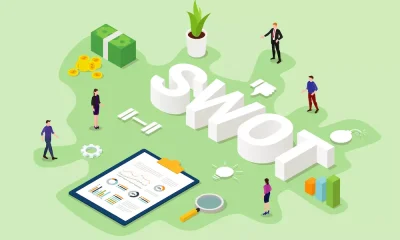Marketing
4 Ways Our Sales And Marketing Almost Failed

The sales and marketing teams are the lifeblood of your organisation. They are your reason that customers find their way to your brand and convert into loyal fans. These are the people who have direct contact with the outside world to try and demonstrate to them what you have to offer and what sets you aside from the rest.
So, what happens if you are seeing a bit of a lag in customer acquisition or sales? What happens if the sales aren’t coming in like they used to, or if leads are really starting to become few and far between? I took a look at what happened in my organisation and thought I would share some of my fixes that I made to get those sales up again.
Keep in mind, a full analysis of your organisation is needed in order to ascertain just where the problem is, but it doesn’t hurt knowing where you can start looking!
Trying To Do Everything Ourselves
We had to take a step back, swallow our pride and realize that we simply couldn’t do it all ourselves. We have young, bright minds on our team, but the team is still quite young. So, we decided to outsource our internet marketing function. Let me rephrase, we brought in an agency to take over our digital marketing for a while to get us a step up.
This is what we got out of it.
- We learnt a few things from them. Being absolute experts, we found ourselves learning quite a lot from them and we could start implementing that in our own methods once the contract expired;
- We got a chance to focus on other avenues. With them taking care of a time-consuming function, we could build foundations in other areas that would have been impossible to do;
- They provided much needed unique ideas. Suddenly we had so many new concepts and ideas that we decided to do a full rebrand, based primarily on unique thought.
We Weren’t Actually Listening To Our Client
We had a set strategy in place. A set marketing plan, concrete content plan, scripted sales calls and a mapped-out plan to deal with our customers. The problem is, customers are not robots. Customers are actually real live, feeling, breathing people. Shocking right?
Our lesson came one day when we lost one of the hottest leads we had received in months. It would have been a massive deal. Everyone in the company was excited. At the last minute, the sale fell through and we all went into shock. What had happened?
It turned out that the customer had requested some personalized additions to be added to the sale. With a bit of innovation and a little bit of hard work from our side, we could have actually lived up to their expectations and delivered their requirements.
This is where we learnt the valuable lesson to actually listen to our customers, hear what they want and act on it! Chances are that if one customer wants personalization, that product will appeal to other customers too!
We immediately started implementing a system where we reached out to our customers and asked for their feedback. We sent out surveys asking them why they loved our services, why they didn’t, what we could have done differently, what more they expected from us. The results were astounding and based on them, we could go back and start making the vital changes that needed to be made.
Customer Experience Management Was Just A Phrase
We realized, especially after the loss of this huge potential client, that the two customer-facing points in our company had no customer experience management knowledge. They were not able to identify what the customer’s needs were, be innovative and meet the requirements. And why should they, they were used to working solely on scripts.
The company had to take a huge step into mapping the customer journey and developing every single one of the touchpoints. In order to do so, we hired a customer experience professional who was able to come in and spend every hour working on the customer’s happiness and loyalty.
Our mission was to surprise and delight the customer from the minute they made contact with our brand. This meant that every single touchpoint needed to be optimized, each team needed to communicate with each other. The flow of information about the customer, their needs and their expectations had to be managed perfectly. Every communication process within the team needed that bit of hard work to make sure that our customers become loyal to the brand. With this information flowing from customer entry right through to acquisition, their needs were effectively managed and we could live up to their expectations.
We Actually Didn’t Know Who Our Customer Was
Another key lesson that we took out of losing this great customer was that we simply didn’t have our finger on the pulse of who our customer was. As much as we wanted them to have a great experience, how could we if we didn’t even know who they were!
We decided to take a deep dive into our customer mapping in order to understand our customer. Understanding demographics, their wants, needs and expectations allows you to have a full view of who you are targeting and who you are speaking to. You will then be able to create a message that will speak directly to them!
We also started monitoring their behaviour to identify what they were about to do next. Where they going to upgrade, had they been with us long enough that we could cross-sell them? Or were they about to churn? This was vital, as losing existing customers was having a huge impact on our income. We needed to understand why customers were churning and what was the main signs that they were about to quit the brand. Once we had this, we could reach out to them with an offer that they couldn’t refuse.
Wrapping Up
It has taken us two years to evolve the organisation and its unique elements, and it is still very much a work in progress. What was vital to us was making sure that our current customers didn’t drop away as we worked out that finding new customers is more costly than keeping existing customers on board. It is not going to be an overnight success. But, in the end, it will be worth those high-paying loyal fans!
Author’s Bio
Dave Schneider is the founder of LessChurn, churn reduction app. In 2012 he quit his job to travel the world, and has visited over 65 countries.






